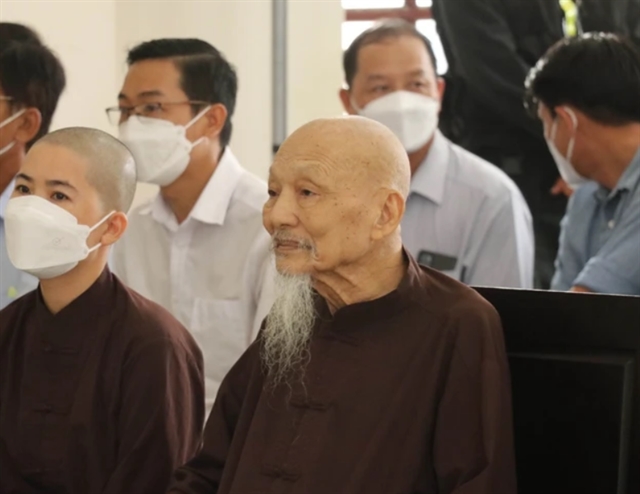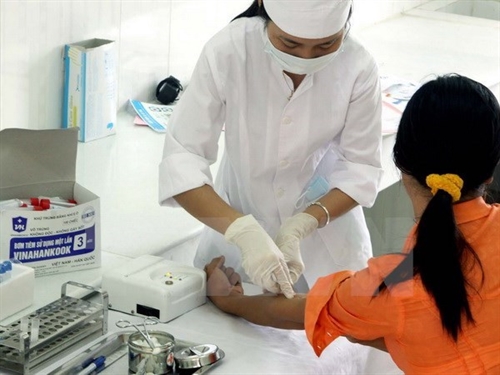 Society
Society

Only 30-35 per cent of people facing a high risk of contracting HIV received HIV tests in the past year, according to statistics from the Việt Nam Administration of HIV Control.
 |
| A medical worker of the Ninh Bình HIV/AIDS Prevention and Control Centre takes blood sample for HIV test for a resident. – VNA/VNS Photo Dương Ngọc |
HÀ NỘI – Only 30-35 per cent of people facing a high risk of contracting HIV received HIV tests in the past year, according to statistics from the Việt Nam Administration of HIV Control.
Speaking at a conference today that summed up the initial results of HIV testing in the community and created a plan for the future, Võ Hải Sơn, an expert from the administration, said discrimination was the main factor keeping people from approaching centres to get tested for HIV.
Many of the people suffering from HIV lived in remote areas with a difficult terrain, so travelling to centres for tests was difficult, he said.
To address the problem, the administration ran a pilot programme for HIV testing in six provinces and cities, Nghệ An, Thanh Hóa, Điện Biên and Thái Nguyên, as well as Hà Nội and HCM City, in the 2015-17 period. It plans to expand the programme to districts with a high population of HIV sufferers in the 2017-20 period.
Under the pilot programme, a number of activities were conducted. Medical workers provided mobile HIV tests in the community. Village-based medical workers and community organisations offered consultancy services on HIV tests. Training was given to the communes’ medical workers.
The people receiving the tests included heroin addicts, their spouses and children, sex workers and homosexuals.
Nguyễn Thúy Vân, an expert from the World Health Organisation, said that in the central province of Thanh Hóa, training for HIV test administration consultancy via village-based workers was conducted in August last year across 12 communes.
A total of 868 people received consulting services and 826 of them received tests. Forty-two tested positive for HIV and 37 of them received treatment with anti-retroviral therapy.
In the northern province of Thái Nguyên, 234 people were tested, and nine of them tested positive and had anti-retroviral therapy.
Sơn said HIV tests in the community had helped medical workers give services to the right people and supply treatment immediately after getting positive test results.
Reports at the conference confirmed that HIV testing in the community was an effective strategy to increase the number of people receiving HIV tests and to discover new cases. The programme’s results will supply information to develop the national guidance on HIV testing in the community. — VNS









